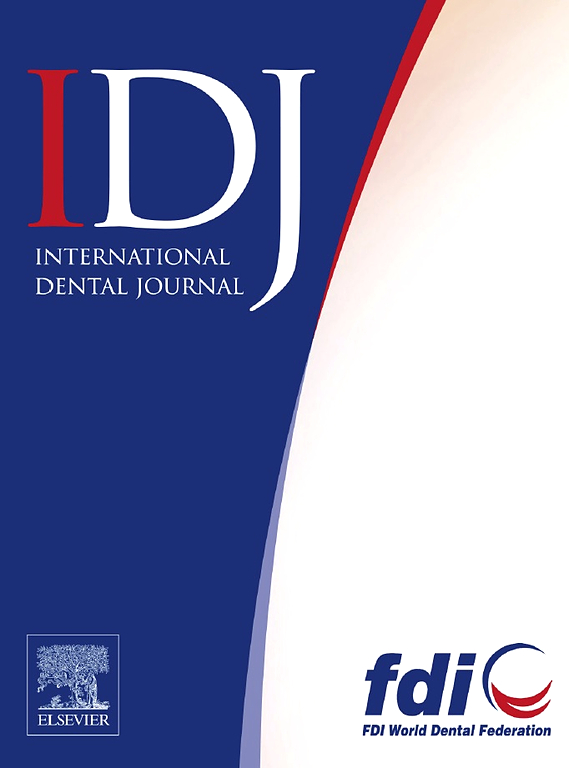Comparison of Microbiota in Zirconia and Titanium Implants: A Qualitative Systematic Review
IF 3.2
3区 医学
Q1 DENTISTRY, ORAL SURGERY & MEDICINE
引用次数: 0
Abstract
Background
In this systematic review, we examine the variations in microbiota on zirconia versus titanium implants, providing insights into their impact on dental health and outcomes. The ongoing discussion regarding whether to use zirconia or titanium for implants underscores the significance of microbiota colonization in determining the longevity and performance of implants.
Methods
Research questions were formulated following the Participants, Intervention, Comparison, and Outcomes framework, and a PROSPERO protocol was registered. A thorough systematic search was carried out in PubMed, Embase, and Web of Science. Two reviewers independently assessed the reports against the Participants, Intervention, Comparison, and Outcomes criteria, including the inclusion and exclusion criteria. Risk of bias was assessed using the Quality Assessment Tool for In Vitro Studies (QUIN Tool).
Results
Of the 2063 articles identified, 19 articles fulfilled the inclusion criteria and subjected to quality assessment. All of the included studies were in vitro research with low (31.5%) or moderate (36.8%) or high (31.5%) risk of bias and reported data from 2 implant abutments. Zirconia implants displayed a higher occurrence of Gram-negative bacteria, such as Tannerella, Aggregatibacter, and Porphyromonas. In contrast, titanium implants showed a greater prevalence of Gram-positive bacteria, including Streptococcus, Lactobacillus acidophilus, and Staphylococcus species.
Conclusion
According to the findings of the current study, both zirconia and titanium implants support the growth of different microorganisms. There were also differences in the quakity and the quantity of microorganisms detected on each material. These differences in microbial profiles indicate that the selection of implant material might impact the microbial ecosystem on the implant surface, potentially affecting clinical outcomes such as infection rates and the longevity of the implant.
氧化锆和钛植入物中微生物群的比较:定性系统回顾
背景:在这篇系统综述中,我们研究了氧化锆与钛种植体上微生物群的差异,从而深入了解它们对牙齿健康和治疗效果的影响。目前关于使用氧化锆还是钛进行种植的讨论凸显了微生物群定植在决定种植体寿命和性能方面的重要性:按照 "参与者、干预、比较和结果 "框架制定了研究问题,并注册了 PROSPERO 协议。在 PubMed、Embase 和 Web of Science 上进行了全面系统的搜索。两名审稿人根据 "参与者、干预措施、比较和结果 "标准(包括纳入和排除标准)对报告进行独立评估。采用体外研究质量评估工具(QUIN Tool)对偏倚风险进行评估:在确定的 2063 篇文章中,有 19 篇符合纳入标准并接受了质量评估。所有纳入的研究均为体外研究,存在低(31.5%)、中(36.8%)或高(31.5%)偏倚风险,并报告了来自两个种植体基台的数据。氧化锆种植体显示革兰氏阴性菌的发生率较高,如丹那氏菌、聚合杆菌和卟啉单胞菌。相比之下,钛种植体的革兰氏阳性菌较多,包括链球菌、嗜酸乳杆菌和葡萄球菌:根据目前的研究结果,氧化锆和钛种植体都支持不同微生物的生长。每种材料上检测到的微生物的数量和质量也存在差异。这些微生物特征的差异表明,种植体材料的选择可能会影响种植体表面的微生物生态系统,从而可能影响感染率和种植体寿命等临床结果。
本文章由计算机程序翻译,如有差异,请以英文原文为准。
求助全文
约1分钟内获得全文
求助全文
来源期刊

International dental journal
医学-牙科与口腔外科
CiteScore
4.80
自引率
6.10%
发文量
159
审稿时长
63 days
期刊介绍:
The International Dental Journal features peer-reviewed, scientific articles relevant to international oral health issues, as well as practical, informative articles aimed at clinicians.
 求助内容:
求助内容: 应助结果提醒方式:
应助结果提醒方式:


